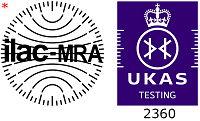The company’s strong RF focus continues with our experienced and knowledgeable RF test engineers providing clients with on-the-spot advice and solutions to achieve and maintain compliance. We help our customers across the UK and throughout the world. With the added addition of offering our customers an even wider range of services.
Please be assured that our postal address and contact details of our Brentwood office remain the same, as do all your main contacts.
Kiwa Electrical Compliance - Brentwood
Arnolds Court, Arnolds Farm Lane, Brentwood, Essex, CM13 1UT
+44 (0)1277 352219
uk.electrical@kiwa.com
NOTE: We have initiated a Legal Entity change to simplify our operations at Kiwa Electrical Compliance. With this change, the RN Electronics legal entity (company number 3051259) you are currently doing business with will change to:
Kiwa Ltd (Trading as Kiwa Electrical Compliance)
Registered office: Kiwa House, Malvern View Business Park, Stella Way, Bishops Cleeve, Cheltenham, Gloucestershire, GL52 7DQ
Company number: 034783056
Please see the links below for our test services.
We are a UKAS accredited testing laboratory No. 2360 to ISO 17025:2017.
* The Extent of the accreditation is limited by the scope. View our latest UKAS Schedule



